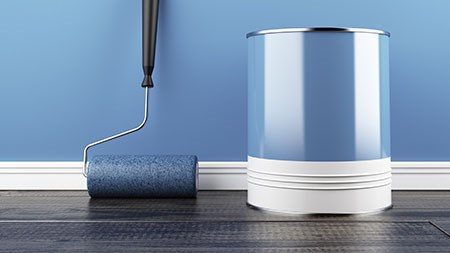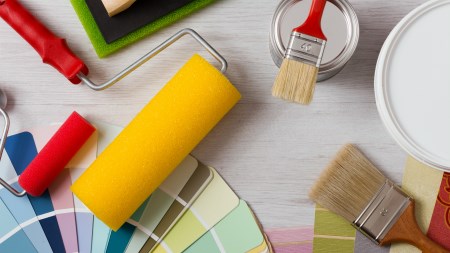A fresh coat of paint will uplift your home and a new colour can totally transform it. Paint also protects surfaces from exposure to the elements - sun, moisture and dirt.
The better quality the paint, the better protection you will have, the longer your walls will look clean and new and the longer the colour you have chosen will last.
Knowing a little about paint before you buy it can save you a lot of money in the long run. Here are some details about paint worth knowing.
The 4 key paint ingredients
Paints are made up of 4 basic ingredients.
• Pigment - pigments provide colour, hiding and gloss control - good quality light fast pigments will mean fewer coats are needed to attain the colour and the colour will last longer and not fade.
• Binder - holds all of the ingredients together and ensures the paint adheres to the surface - good quality binders will give excellent durability and performance.
• Liquid/ Solvent - the carrier for the paint, this gives the paint its consistency so you can apply it. The solvent is either water -based or solvent-based (e.g. mineral turpentine). These solvents evaporate when the paint dries.
• Additives - ingredients specific to a paint type. For example, preservatives to keep the paint fresh, to enhance mould resistance and/or scuff resistance.
Paint types
The two types of paint you need to be aware of are:
Water-based paints
Water-based or acrylic emulsions are the mostly widely used paint. As the name implies these paints contain water and are generally more environmentally friendly. The paint dries quickly and brushes are easily cleaned in water. Advances in technology have made water-based paints preferable for painting wood and metal surfaces too.
Solvent -based paints
These include oil and spirit-based paints known as enamel paints. Traditionally used on furniture, trim and accessories. They flow well and have a tough finish but take much longer to dry and the paint usually yellows over time. Brushes need to be cleaned in mineral turpentine. These paints are bad for the environment and need to be disposed of carefully.
What are VOC's in paint?
Volatile organic compounds, or VOC's are chemical (carbon) compounds that evaporate into a room as the paint dries. These VOC's cause air pollution and can cause health issues. While levels are highest soon after painting, they may continue to be released for months.
There are thousands of different VOCs found in the air - many man-made sources include motor vehicle exhausts, aerosols, carpets and furniture. Consumer awareness of this has resulted in manufacturers producing low and no VOC paints.
Eco-paint
Many large companies refer to their paints as "non-toxic” but still contain VOC solvents, fungicides and chemical pigments.
More companies are specialising in natural or eco paints which are more environmentally friendly. These paints have very low or zero VOC's, so no toxic fumes and the ingredients are environmentally sourced.
While these paints can be a little more expensive than conventional paint, the industry is advancing quickly. If a paint contains an eco-label, make sure it is from an accredited environmental agency. Check with your local hardware if they stock environmentally friendly paint and do a comparison based on the info above.
A little bit of research into the paint you are buying will ensure your home looks beautiful for years to come.
For more information on choosing colour see 8 Steps to finding the perfect paint colour





